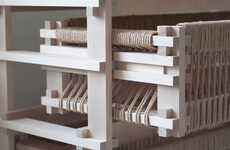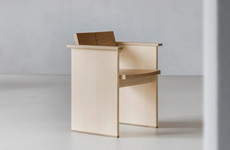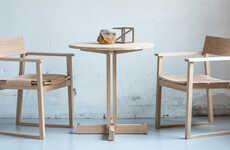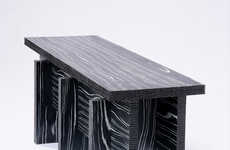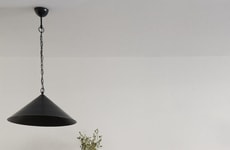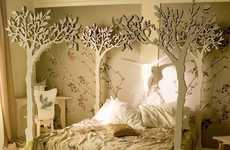
The Endy Series by Studio Ve is Cute and Eco-Conscious
Meghan Young — March 4, 2012 — Eco
References: studiove & design-milk
The Endy Series is an admirable collection of furniture that has been fashioned out of leftover timber. Full of character, the pieces do have a bit of a mishmash look about them, even though they have been carefully cut and sanded to have the same dimensions all around.
Designed by Tel Aviv-based Studio Ve, the Endy Series was recently revealed during Stockholm Design Week in the Greenhouse section. The stool, chair and coffee table included in the Endy Series all feature the same angled legs. Each end of the wood panels used have been brightly painted different colors as well. Intriguingly enough, the saw mill from which the leftover lumber originates paints the ends and not the designers themselves.
Designed by Tel Aviv-based Studio Ve, the Endy Series was recently revealed during Stockholm Design Week in the Greenhouse section. The stool, chair and coffee table included in the Endy Series all feature the same angled legs. Each end of the wood panels used have been brightly painted different colors as well. Intriguingly enough, the saw mill from which the leftover lumber originates paints the ends and not the designers themselves.
Trend Themes
1. Sustainable Furniture - The Endy Series showcases the potential for furniture made from leftover materials and encourages sustainable initiatives.
2. Upcycling - By using leftover timber, the Endy Series is at the forefront of the upcycling trend, which seeks to transform waste into valuable materials.
3. Eclectic Design - The mishmash appearance of the Endy Series reflects the growing trend of integrating mismatched and unique items to create eclectic and personalized spaces.
Industry Implications
1. Furniture Manufacturing - Furniture companies can adopt sustainable practices and leverage leftover materials to produce eco-conscious furniture collections.
2. Green Building - Builders and architects can integrate furniture pieces like the Endy Series into sustainable building practices that prioritize minimizing waste and reducing environmental impact.
3. Interior Design - Interior designers can incorporate upcycled and mismatched furniture to create unique and personalized spaces for clients while promoting sustainability and reducing waste.
5.9
Score
Popularity
Activity
Freshness


